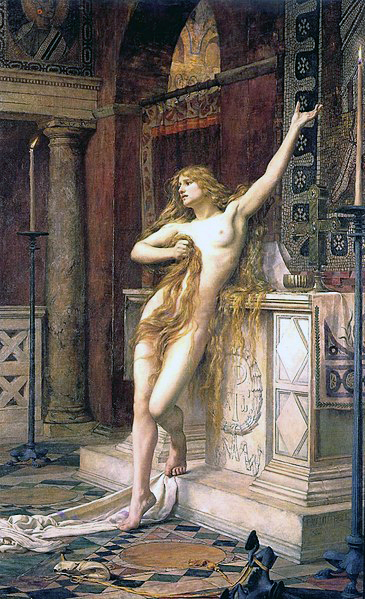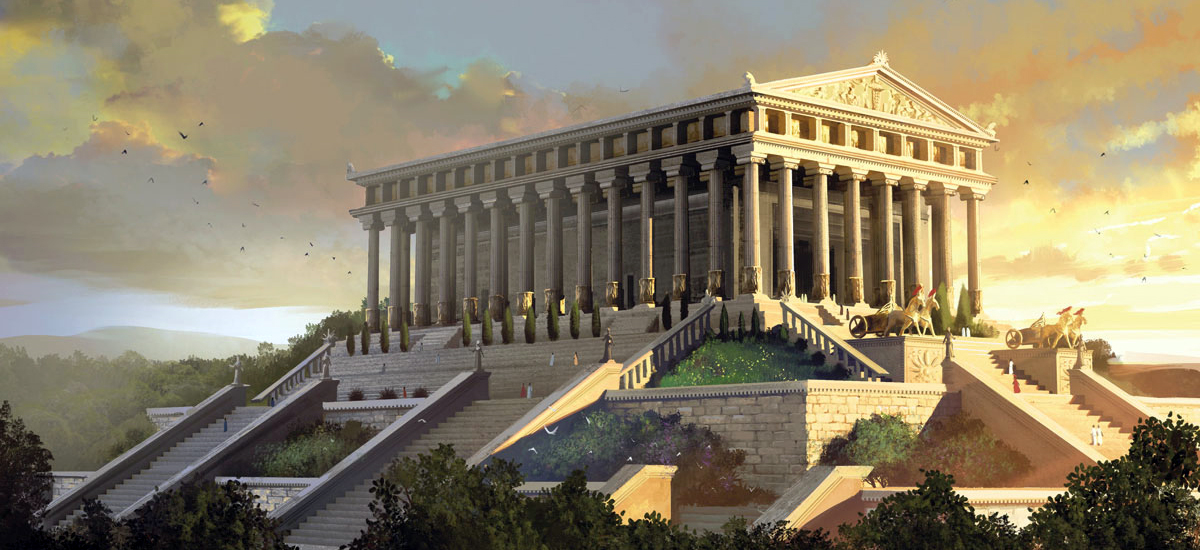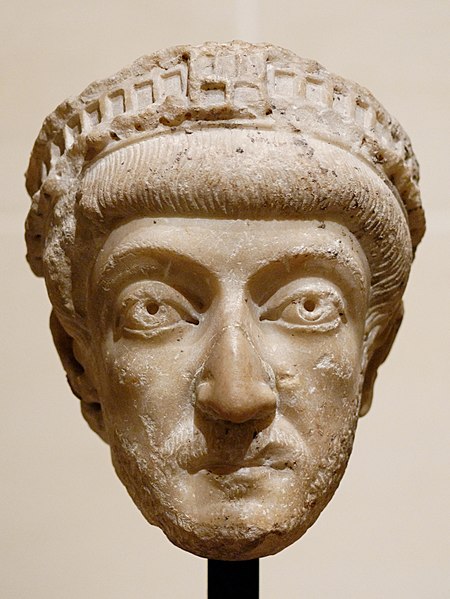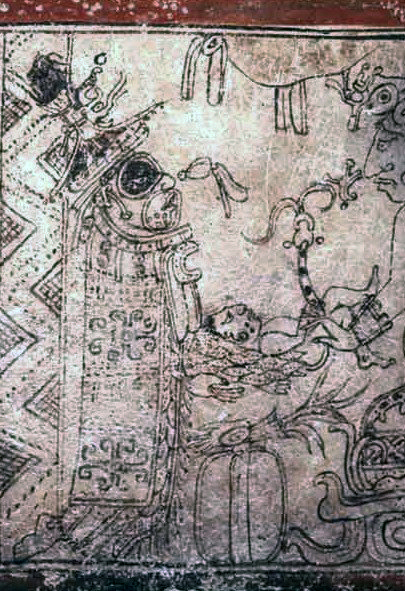
A reliable source
El Sacrificio Humano en la Tradición Religiosa Mesoamericana [Human Sacrifice in the Mesoamerican Religious Tradition]. Mexico City, Mexico: Instituto Nacional de Antropología e Historia & Universidad Nacional Autónoma de Mexico, Instituto de Investigaciones Históricas. ISBN 978-607-484-076-6. OCLC 667990552. (Spanish)
In the previous section, written in 2007, I did not include academic references so that I would have a more lyrical text. However, on November 26, 2013, those in charge of the library at Mexico City’s National Museum of Anthropology (MNA) allowed me to take out from the library, and photocopy on the street, a sold-out book in the market that I had tried for years to get. Even before it was published, since 2007 I had made constant telephone inquiries, to the people in charge of the Museo del Templo Mayor, about the manuscript that would be published.
El Sacrificio Humano en la Tradición Religiosa Mesoamericana is an academic treatise authored by 28 scholars on the subject of pre-Columbian sacrifice: Mexican, European and American archeologists, historians and anthropologists. Finally published in 2010, it is a reliable source to validate what I wrote in the previous pages. In addition to the sources I already knew, El Sacrificio Humano includes some new archeological and taphonomic evidence to corroborate the 16th century claims of the Spaniards about Amerind infanticide, sacrifice and cannibalism. (Taphonomy is the study of decaying organisms over time, including fossil bones.)
Of course: the Mexicans who coordinated the publishing of this major work are politically-correct scholars. There is nothing remotely comparable to “Sahagún’s exclamation” in any of the 598 pages of their treatise. The rationale for the omission can be gathered from the three prefaces to this collaborative work by the director of the Instituto Nacional de Antropología e Historia (“Accepting the reality of the sacrificial practices in ancient Mexico does not mean to rule in favor or against them”); those who coordinate the MNA (“…the Hispanist fundamentalism that sees only the most barbaric aspects of this practice”), and the director of the Institute of Historical Research of the Universidad Nacional Autónoma de Mexico (“…among the non-specialist public often circulates reductionist ideas about it [the Mesoamerican sacrifice]… the papers presented here allow a more accurate and nuanced approach” —this, and the other translations, are mine). Take note that these three persons and the Mexican and non-Mexican anthropologists and historians that contributed with academic papers to El Sacrificio Humano don’t deny the facts about what the pre-Hispanic Amerinds did. What contemporary academics do is abstaining from value judgments about such practices, a subject analyzed in the next section.
In one of the first chapters after the above-mentioned prefaces of the book, the archeologist Eduardo Matos Moctezuma presents the archeological evidence of sacrificial rituals: skeleton remains of the victims, stony bases for the sacrifice, the instruments used in the immolations, and more. About it, Leonardo López Luján, the main coordinator of the book, acknowledges in the very first chapter as “having their referents in the historical sources from the 16th century.” This scholar is thus acknowledging that what the Spanish chroniclers saw and recorded in the 16th century is now being corroborated by taphonomy and archeology. López Luján of course uses an artificial passive voice, “fueron muertos” instead of the natural “los mataron” (they killed them) in that introductory chapter when writing about the sacrificial victims.
In this postscript of the second chapter, I will summarize some of the facts that the scholars of the treatise offer about how the natives behaved before any substantial contact with the Europeans.
El Sacrificio Humano sheds light on the remains photographed by Héctor Montaño (see the photo in “Sahagún’s exclamation” in this book): a child offering to Huitzilopochtli that Montaño kindly sent me. The piece “Huitzilopochtli and child sacrifice in the Great Pyramid of Tenochtitlan” by López Luján, Ximena Chávez Balderas, Norma Valentín and Aurora Montúfar (pages 367-394) contains a fascinating section under the heading “Huitzilopochtli: an infant deity?” Elsewhere in the same article the authors say:
Everything indicates that this deposit is the material expression of a mass sacrificial ceremony motivated by the devastating drought of year 1 Tochli, corresponding to our 1454 C.E. and reported in a number of Indian annals. The presence of the Offering 48 in the northwest corner of the Temple fully corresponds with the documentary sources of the 16th century [pages 367-368].
Then he corroborates something I have already said in previous chapters:
During such ceremonies [to Tláloc], subject to the calendar or performed in times of crisis, children were symbolically similar to the dwarfs and deformed assistants of rain, as their profuse tears shed when immolated served as a hopeful omen of abundant precipitation. The careful study recently published by Michel Graulich about human sacrifice among the Mexicas indicates that, usually, the chosen children were given away or sold by their parents,…
I interrupt the sentence and added italics because this passage refutes very directly the plot of La Santa Furia of my father, as we will see in more detail in ¿Me Ayudarás?, the next book of this trilogy.
little slaves offered by the lords and wealthy people; infants purchased out of town, or children of prisoners of war. There are indications, moreover, that the kings and lords to some extent responsible for the smooth running of the meteors destined their own offspring to the téhcatl during droughts or floods, or to get rich harvests [pages 368 & 370].
The article includes taphonomic analysis on numerous cut marks on the ribs of both sides of the rib cage, as well as perimortem fractures produced by the same cutting action on the child’s body.
In our view, this body of evidence is sufficient to conclude that the child of Offering 111 died during a sacrificial ceremony in which his tiny heart was extracted [page 378].
Once again, the following passage gives the lie to the plot of the musical oratorio of my father in honor of Las Casas, which is based on a historical inversion of the parental-filial relations before the arrival of the Spaniards:
Not all child sacrifices were linked to the gods of rain and fertility. Some historical documents reveal that people who were in situations of adversity, or had lost their freedom, or had been suffering a terrible disease, promised to give their children in exchange for their salvation. In other cases, the life of infants was claimed just before the military confrontations [pages 381-382].
In the following pages of the treatise the authors mention the Spanish chroniclers as complementary sources of what recent archeology has discovered, for example the texts by Francisco López de Gómara, Antonio Tello, Diego Durán, and Bernardino de Sahagún. And on page 345 another scholar lets us know that some children’s remains of sacrificial offerings have been recently excavated in what is left of the Great Pyramid; in other sacred edifices, and even beneath Mexico City’s cathedral.
In their article, “El Sacrificio Humano en la Parte Central del Área Maya,” pages 169-193 of El Sacrificio Humano, Stephen Houston and Andrew Scherer write:
Both supplicants offer the enthroned figures an object named “his foot,” yook, perhaps referring to the wooden scaffolding that stands in the stele of Yaxhá. The link to the fires is made clear with the presence of the inflammatory base behind the scaffold. Unlike other sacrificed children, the infant appears to be alive.
In addition to the image reproduced in El Sacrificio Humano, see also the illustration at the [top of this blog entry].
As in several Mesoamerican societies, the image of a supernatural act can function as a basic model for the dynastic rituals. There is a parallel in the evidence of the sacrifice by fire, a torture with fatal goals, applied by a god on the back of another…
The presence of infants over the plates, especially in contexts of way [Mayan word] or co-essences of Maya rulers, indicates that this is a special “food.” Usually, the way was very different food from the food of human beings with emphasis on hands, eyes, bones, and in this case, the soft bodies of children.
On page 182 the authors discuss other Maya sacrifices:
The presence of women and children indicates that these individuals were not enemy combatants and strongly suggests a sacrificial context, perhaps a sacrifice of wider political significance.
Several skulls of Colhá show marks of sharp and unhealed cuts, particularly around the eye sockets, which suggests that some of these individuals were flayed, either shortly before or after death. The skinning of the face supports the iconographic images of beheading showing substantial mutilation, particularly of the eyes. Although it is likely that much of this occurred post-mortem, we must ask whether at least some of these traumas were inflicted before death to maximize the suffering of those about to be executed.
The Mayas were not the only serial killers of children in Mesoamerica. In the opening paragraph of “El Sacrificio Humano en el Michoacán Antiguo” Grégory Pereira says that Tariácuri, the founder of the empire of the Purépecha culture that flourished in the Postclassic period, congratulates destiny when learning that his own son would be sacrificed (page 247). This of course reminds me what Nezahualcóyotl did, recounted above. Pereira cites the Spanish Relación de Michoacán as a credible source about how the Michoaque people behaved before the arrival of the Spaniards.
The Relación states that part of the captives such as old people and children were sacrificed by extraction of the heart right on the spot of the battle, and that “the bodies of these victims were cooked and consumed at the same place.”
El Sacrificio Humano is a large book, 27 x 21 centimeters in order to provide a very comfortable view of the many images it contains. On page 254 Pereira reproduces a diagram showing a skeleton with points showing the impact of the rib cut to reach the heart during those sacrifices, and he adds that those who performed the ritual were called opítiecha or “holders” who grabbed the extremities of the victim. He adds:
Once slaughtered and decapitated, the dismembered body was in the house of the priests and the various parts offered up to the gods and eaten by the priests and lords. Those who were killed at the scene of the conflict were eaten by the victors… After the cannibal feast, the bones of the slaughtered apparently were gathered and preserved in the house of the priests.
On the next page Pereira includes an illustration of the Relación depicting the consumption of human flesh. Later, on page 262, the author reveals that Tariácuri also ordered the killing of another of his sons, Tamapucheca, as punishment for having escaped being sacrificed. Then Pereira recounts that on the day following the sacrifice, they “wore the skin of the slaughtered in a dance, and for five days got drunk.” That is, the cadavers were skinned so that the priests could wear the skin as clothes. About the symbolism of the sacrificial institution, on page 466 Guilhelm Oliver corroborates what I said many pages ago:
In describing these ceremonies, Sahagún’s informants (Florentine Codex, II-54) provide us with an extremely important piece of information: “Whoever has a captive cannot eat the flesh of his captive. He said, how could I eat myself? When capturing a captive he said my dear son and the captive said, my dear father.” This fundamental text expresses the identity between the warrior and his captive…
Once this important work is printed again, those who are skeptical about the factual accuracy of what I said in the previous chapters could obtain a copy of the book. As I said, it is heavily illustrated and has the imprimatur of the most respected historical institutions of Mexico.
___________
The objective of Day of Wrath is to present to the racialist community my philosophy of The Four Words on how to eliminate all unnecessary suffering. If life allows, next month I will reproduce another chapter. Day of Wrath is available: here.
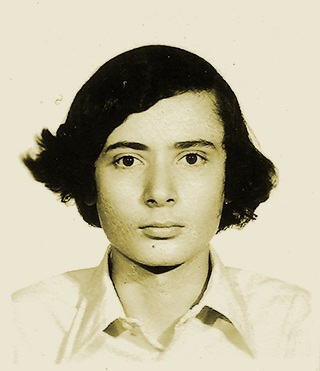 The parental home was not only very Catholic, it was also the place where he experienced maltreatment as a teenager: experiences that shaped his character. Decades later, he made this topic the subject-matter of various publications that aim to prevent such events.
The parental home was not only very Catholic, it was also the place where he experienced maltreatment as a teenager: experiences that shaped his character. Decades later, he made this topic the subject-matter of various publications that aim to prevent such events.


